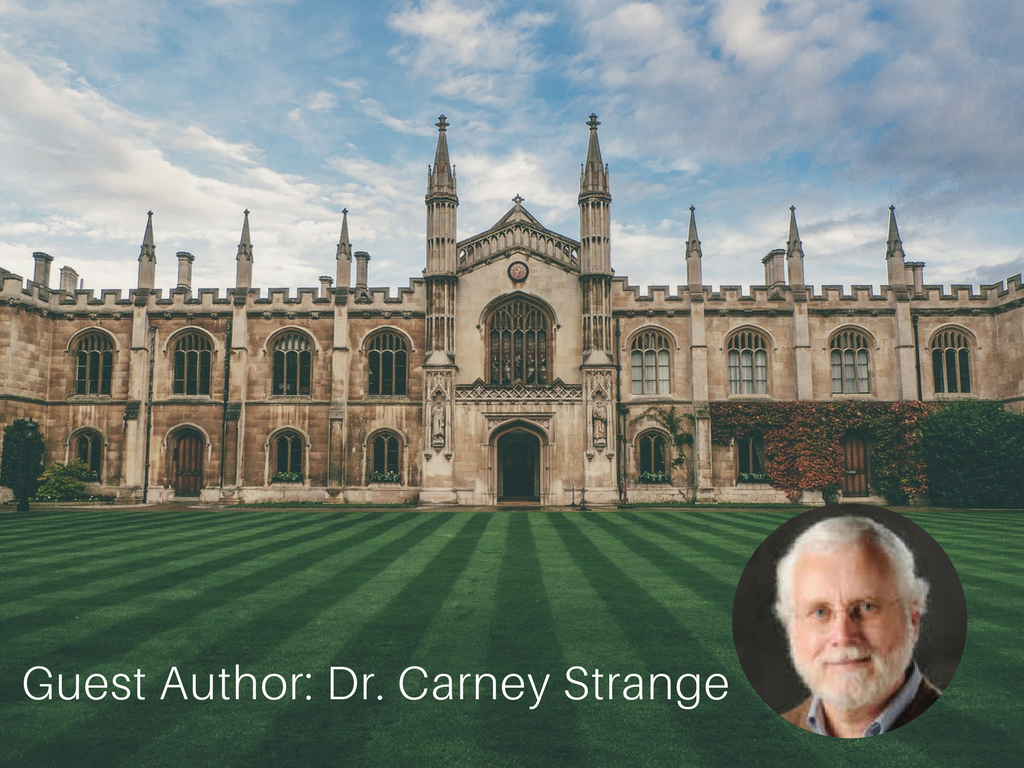the Evolution of Higher Learning With Dr. Carney Strange - Part II
By: Admin on Feb 7, 2018 1:16:00 AMthe Evolution of Higher Learning With Dr. Carney Strange - Part II
By: Admin on Feb 7, 2018 1:16:00 AM
Missed Part I? Read it here. Even to this day, the college residential learning model retains its gold standard status in the minds of most, but shifting realities are quickly eroding its limited application. Full-time residence-based study reflects the experience of a relatively small portion of those pursuing advanced education, in all less than a quarter of postsecondary enrolments. The reality is that such an immersive experience is becoming increasingly out-of-reach for growing numbers of students who can neither afford the time nor expense of such campus-based opportunities. Consequently, the illusion of “going to college” is quickly advancing into something quite different, and will continue to do so for some very good reasons. First, physical campuses are no longer necessary for gaining access to information. Second, higher education has out-priced its product and in many ways fails to deliver, for far too many, on the product it promises to offer. And third, competing alternatives are emerging rapidly in the workplace and other nontraditional settings, using more accessible technologies and offering a greater range of options (e.g., Coursera, Kahn Academy, Minerva, and P2PU). In the language of some observers, these are all “disruptive innovations” (Christensen & Eyring, 2011), perhaps fueling a major “tipping point” (Gladwell, 2000) in what we do as educators and where and how we do our work. Rather than insisting that students come to our institutions, many are beginning to ask, “How can we come to you?” Land grant universities have long understood the importance of such a question, pioneering many efforts through extension and correspondence programs. Such initiatives however were always the exception rather than the rule. Today our system, long rooted in stability, is becoming with ever increasing speed a system challenged and supported by a new ethos of mobility, wherein colleges and universities are beginning to reach out to learners with a much more varied menu of techniques and approaches.

One author recently dubbed the present era as “the end of college” a moment for “creating the future of learning and the university of everywhere” (Carey, 2015). Accompanying this shift toward mobile learning are additional concerns: What are some viable alternatives to place-bound learning? In an era of life-long learning what is the importance of time-bound education? When learning is known to be a function of individual differences, what is the value of standardizing the means to it? Shouldn’t the outcomes of learning be at least as important as the means to achieve them? All of these concerns challenge the very foundations of our work and suggest that revolutionary change is afoot. New technologies bring promises of support for learning anywhere, anytime, and anyhow. Supporting this revolution has been the “emergence of a mobile culture, the proliferation of social networking, and a greatly expanded and deeper understanding of the dimensions of human learning” (Strange & Banning, 2015, p. 239). The rapid advancement of mobile technology itself has all but assured that mobile learning is here to stay, perhaps challenging the efficacy of traditional assumptions and practices. At such a critical juncture, institutions of higher learning must position themselves strategically to consider new possibilities. While their future might not be all that clear, the steps to be taken seem certain. With institutional mission in mind, consider some of the following questions in sorting through choices to be made for participating more fully in the mobile culture. Answers will vary by institutional type and mission. Regardless though, such probes will stimulate the kind of discussions necessary for defining the issues, articulating the options, and identifying resources for their resolution.
- How do current campus physical designs, facilities, and programs actively support student learning?
- What are barriers to student learning, especially at the beginning of the college experience?
- How is learning among students connected to their experience of living?
- How are differences in student learning styles recognized and accommodated in the institution?
- How does social networking engage students in learning opportunities on and off campus?
- How does campus technology serve to encourage and support student learning?
- In what ways does mobile technology contribute to and sustain a sense of community for students?
- How does the institution welcome students into the community of learners while mitigating their risk in being there?
- Rather than a distraction from learning, how can mobile technology attract students to learning?
Conclusion While the fundamental formula for student success remains intact, that is – to include, secure, engage, and invite students into the learning community (Strange & Banning, 2015), how it is designed and delivered must change. Continuing on the path we’ve been on the past fifty years will not work in the next fifty years. Our system of postsecondary education is in need of radical reform if it is to survive and a not insignificant part of that reform must include the benefits of mobile learning.
References
Carey, K. (2015). The end of college: Creating the future of learning and the university of everywhere
. New York: Riverhead Books. Christiansen, C., & Eyring, H. (2011). The innovative university: Changing the DNA of higher education from the inside out.
San Francisco, CA: Jossey-Bass Publishers. Gladwell, M. (2000). Tipping point: How little things can make a big difference. New York, NY: Little Brown and Company. Strange, C., & Banning, J. (2015). Designing for learning: Creating campus environments for student success
. San Francisco, CA: Jossey-Bass Publishers. Strange, C., & Hagan, H. (1998). Benedictine values and building campus community. The Cresset: A Review of Literature, Arts, and Public Affairs, Special Lilly Issue,
pp. 5-12.


.png)
.png)
.png)

